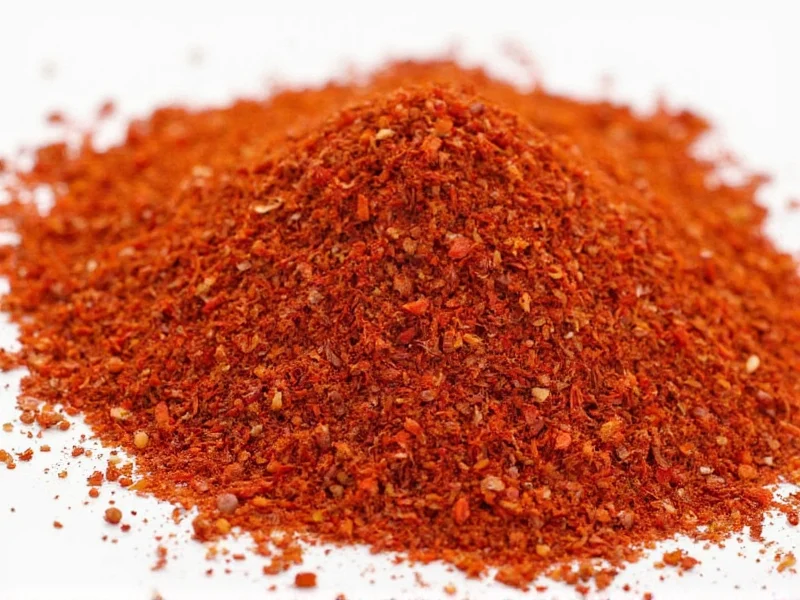When you're following a recipe that calls for red pepper flakes or crushed red pepper, understanding these common spice terms can prevent kitchen confusion. Despite subtle differences in texture that might appear between brands, these products serve identical culinary purposes and can be substituted for one another without affecting your dish's outcome.
Understanding Red Pepper Flakes and Crushed Red Pepper
The terms red pepper flakes and crushed red pepper describe the same fundamental product: dried chili peppers that have been broken into small pieces. Most commercial varieties primarily contain cayenne peppers, though some blends may include other chili varieties like serrano or jalapeño peppers.
Food manufacturers often use these terms interchangeably on packaging, creating unnecessary confusion for home cooks. The crushed red pepper vs red pepper flakes distinction largely exists in consumers' minds rather than in actual product differences. When examining ingredients lists, you'll typically find identical components: dried red chili peppers.
Physical Characteristics Comparison
While functionally equivalent, you might notice slight variations in appearance between products labeled differently:
| Characteristic | Red Pepper Flakes | Crushed Red Pepper |
|---|---|---|
| Texture | May appear slightly more fragmented | Often has more uniform particle size |
| Color Variation | Can show more color gradation (red to orange) | Tends toward consistent deep red |
| Seed Content | Often contains visible seeds | May have fewer visible seeds |
| Heat Distribution | Slightly more variable heat per piece | More consistent heat level |
Culinary Applications and Substitution Guidelines
Understanding whether crushed red pepper is the same as red pepper flakes matters most when cooking. Both products deliver identical flavor profiles and heat levels to dishes. The Scoville heat units typically range from 30,000 to 50,000, placing them firmly in the medium-hot category.
When substituting one for the other in recipes:
- No measurement adjustments are necessary—use equal amounts
- For dishes where appearance matters (like pizza garnish), red pepper flakes might provide more visual appeal
- In sauces or marinades where texture is irrelevant, either form works equally well
- Homemade versions can be created by drying and crushing any hot red chili peppers
Common Misconceptions Clarified
Several myths persist about these products that deserve clarification:
Misconception: Crushed red pepper contains additional spices
Reality: Pure crushed red pepper contains only dried chili peppers. Some commercial blends may include other ingredients, but this applies equally to products labeled as red pepper flakes.
Misconception: One is significantly hotter than the other
Reality: Heat levels depend on the specific chili variety and growing conditions, not the labeling. When comparing products made from the same pepper variety, the heat remains consistent regardless of whether it's called flakes or crushed.
Misconception: They come from different types of peppers
Reality: Both terms typically refer to processed cayenne peppers, though regional variations might use local chili varieties. The difference between red pepper flakes and crushed red pepper isn't botanical but rather marketing terminology.
Practical Buying and Storage Recommendations
When purchasing either product, look for these quality indicators:
- Bright red color (dull appearance indicates age)
- Strong, fresh chili aroma
- No moisture or clumping
- Transparent packaging to verify quality
For optimal shelf life, store your red pepper flakes or crushed red pepper in an airtight container away from light and heat. Properly stored, they maintain peak flavor for 1-2 years, though they remain safe to consume indefinitely (with gradually diminishing potency).
Homemade Alternative Preparation
If you prefer making your own, creating crushed red pepper from scratch is straightforward:
- Select mature red cayenne peppers (or other hot red varieties)
- Wash and dry thoroughly
- Air dry or use a food dehydrator until brittle
- Remove stems and crush by hand or with a spice grinder
- Store in an airtight container
This homemade version offers superior flavor and lets you control the heat level by adjusting seed content. Many chefs find that understanding are red pepper flakes and crushed red pepper the same empowers them to make informed substitutions based on availability rather than perceived differences.











 浙公网安备
33010002000092号
浙公网安备
33010002000092号 浙B2-20120091-4
浙B2-20120091-4